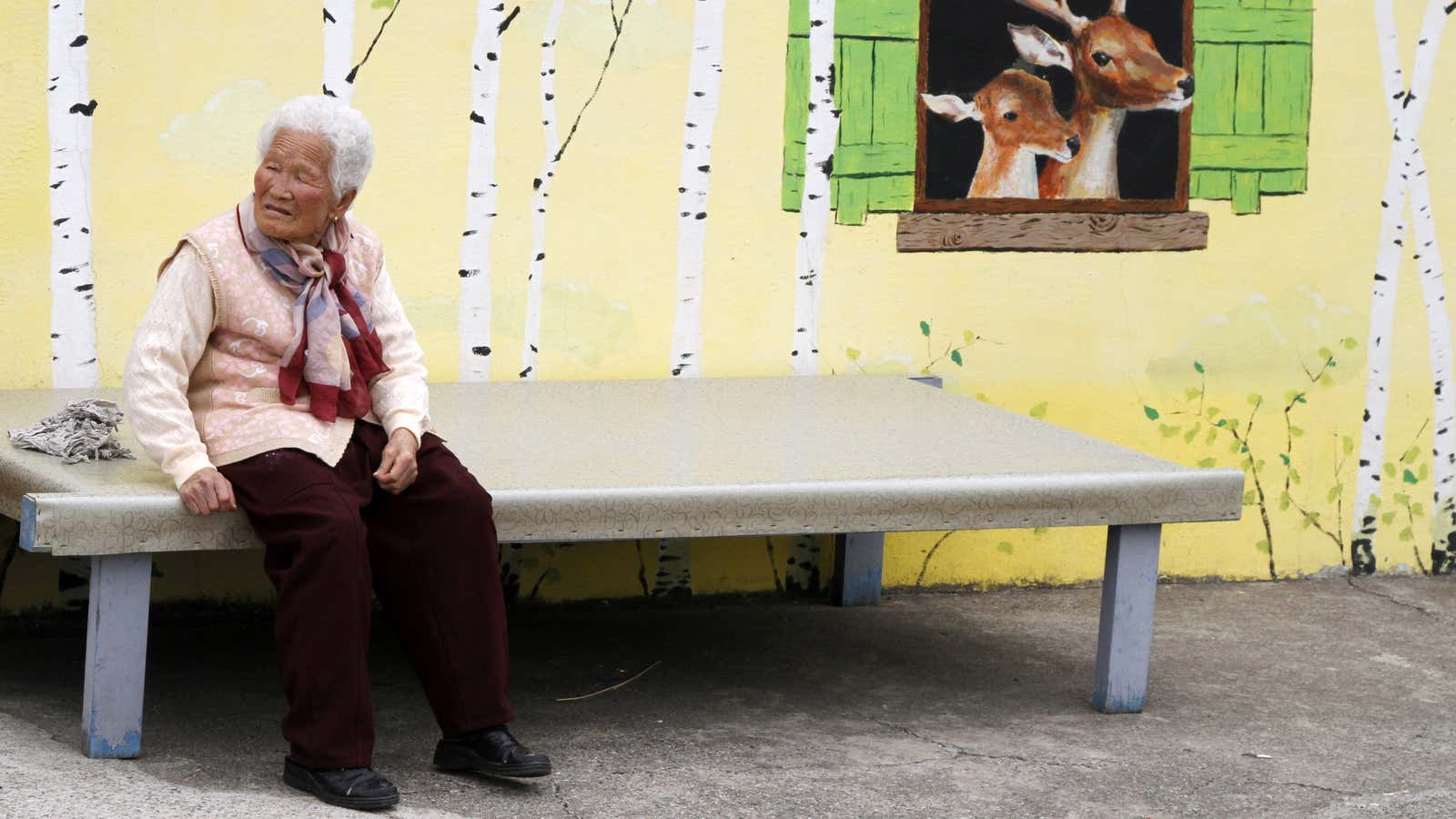For the first time ever, South Korea has more old people than young people.
The latest census statistics from the government show that the number of elderly people in Korea, defined as those aged over 65, hit 6.8 million in 2016, comprising 13.6% of its total population. The number of young people, or those aged up to 14, amounted to 6.8 million.
With seniors on the verge of making up 14% of the population, Korea is on the cusp of becoming an “aged society”—a threshold that it reached much quicker than other developed countries. According to the National Statistics Office (pdf, p5), it took Japan 24 years to go from an “aging society” (defined as seniors making up 7% of the population) to an aged one—the number of over-65s stood at 34.6 million in Japan, or more than 27% of its population, according to figures released in 2016. It took Germany 40 years and France 115 years to make the same transition. Korea became an aging society just 17 years ago. The government expects Korea’s population to peak in 2031.
About half of Korea’s elderly live in poverty, with many having to resort to collecting cardboard boxes or even prostitution to survive.
At the same time, Koreans are still not having enough babies. According to figures released yesterday (Aug. 30), the birth rate in 2016 fell to a seven-year low, with a woman projected to have 1.17 children in her lifetime—the lowest among OECD countries. Officials have predicted that the number for 2017 would be the lowest ever, at 1.03. President Moon Jae-in said the country is facing a “national crisis,” and that if the country doesn’t do more in the next few years to encourage women to have more children, including child care, housing, and employment reforms, there would be “no way to repair the damage.”
